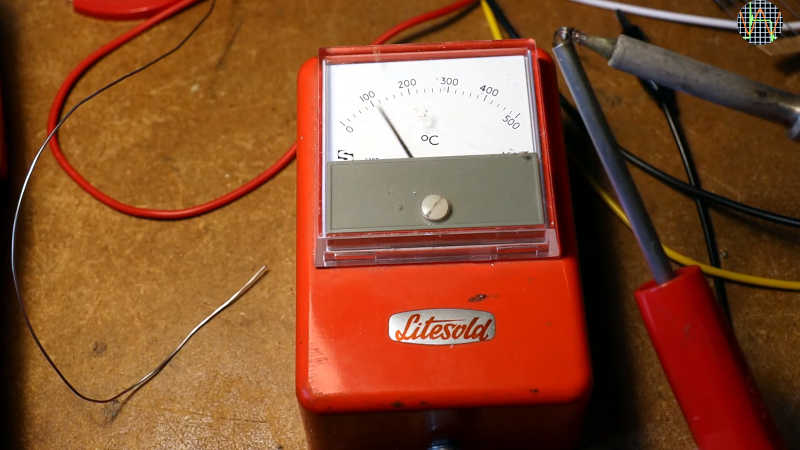It is common these days to have a soldering iron where you can set the temperature using some sort of digital control. But how accurate is it? Probably pretty accurate, but [TheHWCave] picked up a vintage instrument on eBay that was made to read soldering iron temperature. You can see the video below, which includes an underwhelming teardown.
The device is a J thermocouple and a decidedly vintage analog meter. What’s inside? Nearly nothing. So why did the meter not read correctly? And where is the cold junction compensation?
The probe seemed okay when used with a modern meter. However, driving the meter directly showed a problem. It seemed like something was wrong with the meter’s movement.
Pulling the meter out revealed a handwritten label identifying the meter as having a full-scale deflection of just over 27 millivolts and using a 0.5 ohm external resistor. Unsurprisingly, the old meter had some issues with the thermocouple.
Pulling the meter showed that the compensation was actually inside the meter casing. The meter’s problem was due to these extra components: an NTC thermistor and a custom wire-wound resistor. Changing the resistor fixed the box. This time, he put the two components outside the meter housing in the vast space of the nearly empty case.
Today, we take measuring temperature for granted. Only the cheapest meters lack temperture measurement and you can use other techniques like IR sensors, too. But this was an interesting look at how it was done “back in the day” and an interesting repair, too.
Thermocouples are an old standby for measuring high temperatures. With modern tech, it is pretty simple to compensate them.
